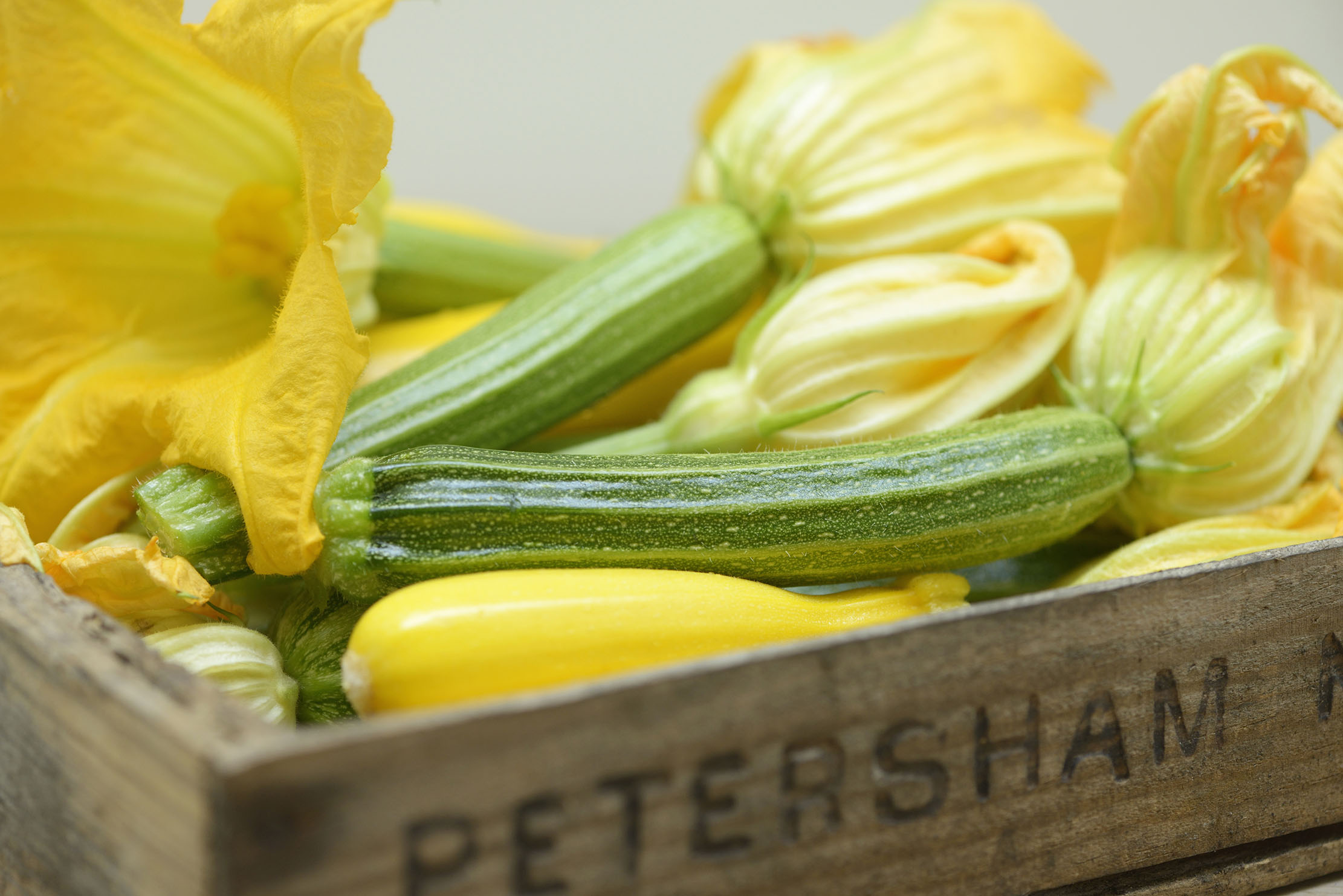Grow your own courgettes: What to plant, when to plant it... and why size really does matter
Mark Diacono shares his tips on the surprisingly simple yet hugely rewarding art of growing courgettes.


Despite all the progress with gender stereotypes, there are a few character traits that still distinguish the male. We may place keys anywhere about the house and they are still in the ‘correct’ place; we (and we alone) know which answers in quiz games have been superseded since publication — and we are incapable of opening a packet of courgettes without sowing them all.
Every year, I do the calculation: there’s myself, my wife and our daughter: two plants, three at a push, plus one for the slugs, makes four. And then I sow all the seeds in the packet and spend the summer complaining to anyone (left) who will listen about us swimming in courgettes.
This is trebly troubling, because I like to grow three varieties. I have come up with a solution. Or, rather, my wife has: she opens and confiscates the packets once I have extracted a few seeds of each. I’m not proud it has come to this.
Every year, I grow three kinds: a familiar cigar variety; a yellow option; and one that produces round fruit.
The familiar cigar type changes often. This year, it’s the excellent and reliable Sure Thing, with a couple of Tromboncino — a beautiful old Italian variety — as a second sowing.
Soleil is the never-changing yellow fruiter, a courgette that I love both cooked and raw. As for the last category? Not many grow round-fruited courgettes (such as Rondo di Nizza) but I try to convince anyone who’ll listen.
Every year, you see allotmenters proudly carrying home marrows as if they were their first born, to a fearful fate whereby they are chiselled hollow and filled with something (usually heavily spiced meat) that actually has some flavour; round courgettes are perfect for stuffing, coming in person-sized portions, and actually have a taste to complement the filling.
Exquisite houses, the beauty of Nature, and how to get the most from your life, straight to your inbox.
One thing my many years of growing courgettes has taught me is that their peak is when 5in or so long. At this point, they become like a bottle of cordial: letting them get larger is simply adding water, which dilutes their flavour.
You have to see your plant as a flavour machine, not a volume machine, and religiously pick the courgettes when they reach this size. Those you don’t eat go on to the compost heap.
This may seem wasteful, but it is far from it: if you pick them large and less flavoursome, not only are they less pleasurable to eat, but the plant gets a message that the fruit is approaching maturity, that viable seed is forming, and production slows down. Keep picking and your plants will keep producing over a longer period.

Courgettes are easy to grow and you have plenty of slack about when to start. I sow them under cover in small pots in April or early May, usually in two sowings, with one to follow in early summer: it keeps me in courgettes until October. I’ve lost a few seedlings by being a bit slapdash in planting out, so don’t skip hardening them off for a few days before planting them out and only do so once you’re confident you’ve seen the last frost. I allow about 24in between plants.
Courgettes need plenty of water during the first weeks after planting out. I tend to water early in the day, as, towards the end, it can encourage the slugs to come out for an evening’s chomping. Although their leaves help to retain soil moisture once the plant has grown to a reasonable size, water courgettes well during prolonged dry spells.
They don’t really need feeding, but if I have a little comfrey feed or tomato feed left in the watering can from feeding those that do, I give it to the courgettes. Anytime from flowering onwards, it gives them a little boost to productivity. As we know, this can be as much a blessing as a curse, but a thriving plant is usually healthier and less troubled by disease and pests.
A lot of people seem hesitant about eating flowers and, if that applies to you, these will bridge that river. They’re superb straight from the plant as a garden snack: the clean, gentle pepperiness of the petals is beautifully complemented by the fresh, sweet crunch of the base.
They are good stuffed and deep fried, too. Pick them just before they open, so that they stay closed more easily when cooking, and stuff either with ricotta and chopped herbs or leftover risotto.
Target the male flowers — those without a small courgette developing behind the base — and you won’t get any fewer courgettes. (Unless, of course, you’ve sown yourself a manly glut.)
Mark Diacono grows edibles, both usual and unusual, at Otter Farm in Devon — www.otterfarm.co.uk

Greatest Recipes Ever: Suzanne Goin’s courgette gratin
Thomasina Miers chooses Suzanne Goin’s courgette gratin as one of her greatest recipes ever

Credit: Melanie Johnson
Recipe: Thai prawn-and-coconut soup with courgette noodles
This summer squash is versatile, tender and easy to cook.

Cooking with courgettes
Blended into chorizo soup or served with pan-fried marinated halibut: just two of our favourite courgette recipes this summer.
Mark is lucky enough to spend most of his time eating, growing, writing and talking about food. He has written fourteen award-winning books, including A Year at Otter Farm and A Taste of the Unexpected (both won Food Book of the Year, and Garden Book of the Year). Known for growing everything from Szechuan pepper to pecans to Asian pears, Mark's refreshing approach to growing and eating has done much to inspire a new generation to grow some of what they eat. He was involved in the early days of River Cottage, appearing in the TV series, and writing four River Cottage books. Mark writes to a global audience on his best-selling Substack: Mark Diacono’s Abundance.
